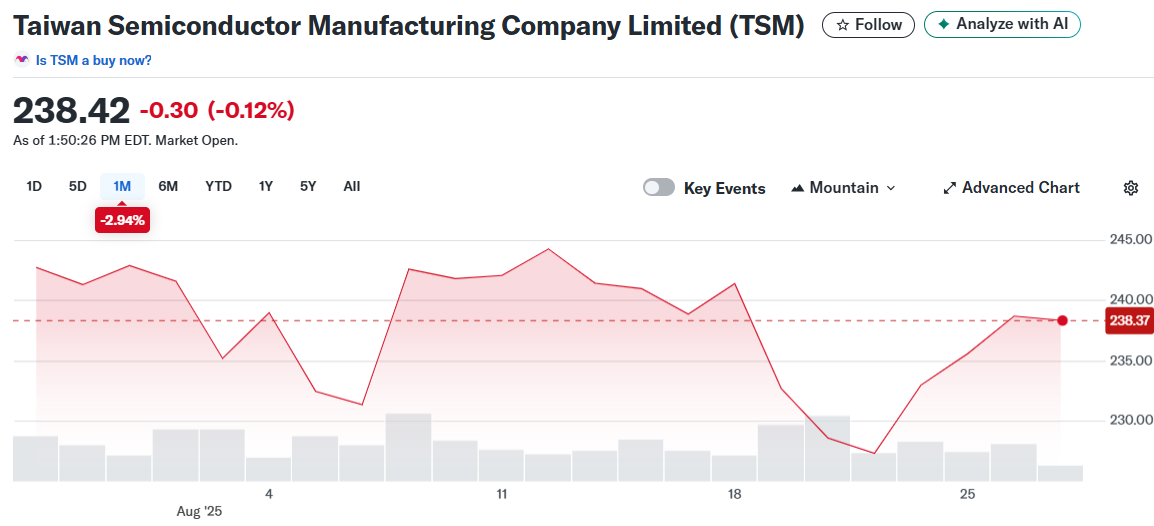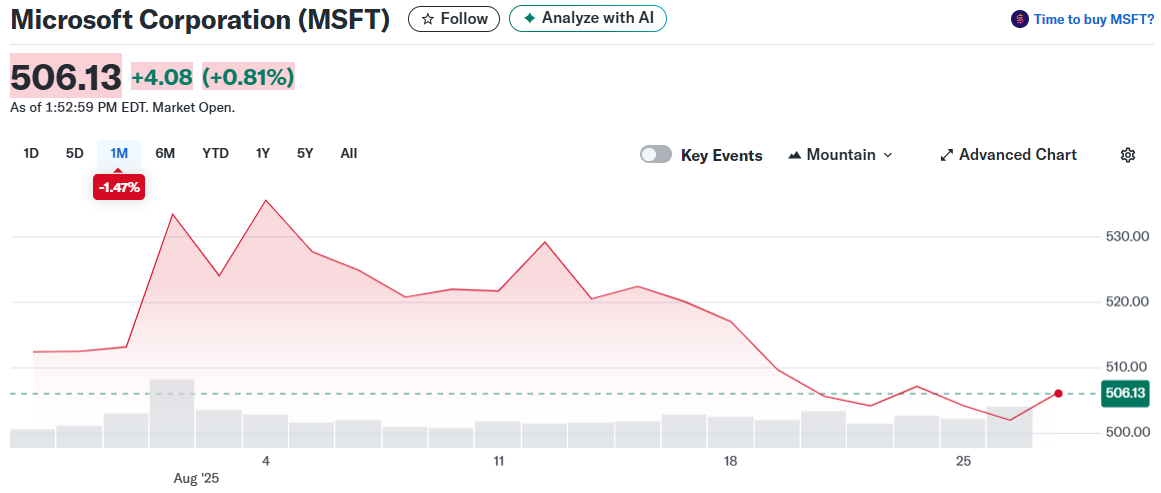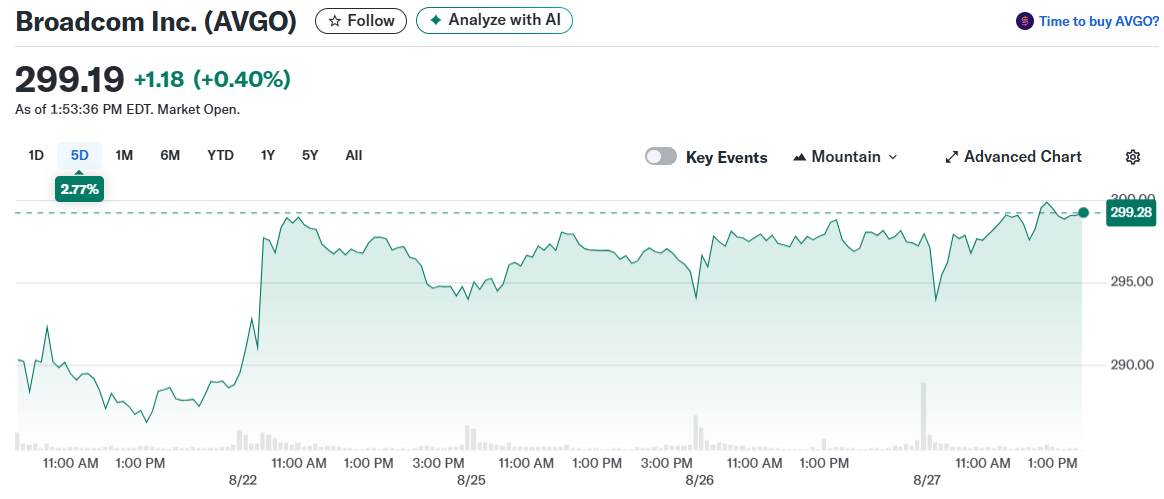TLDR
- Taiwan Semiconductor Manufacturing produces two-thirds of the world’s microchips and dominates high-performance AI semiconductors
- Microsoft trades at expensive valuations but maintains dominant market position with 70% of desktop/laptop OS market share
- Broadcom leads AI infrastructure connectivity with technology that links millions of processors in data centers
- The global semiconductor industry is expected to double from $600 billion to $1.2 trillion by 2034
- All three companies benefit from recurring revenue models and entrenched market positions that are difficult to displace
The current market presents challenges with potential interest rate changes and economic uncertainty. However, three technology companies stand out as solid long-term investments based on their market dominance and growth prospects.
Taiwan Semiconductor Manufacturing leads the global chip production market. The company produces approximately two-thirds of the world’s microchips. It also manufactures an even larger percentage of high-performance semiconductors used in artificial intelligence platforms.

Major technology companies like Nvidia, Intel, and Apple rely on TSMC for chip manufacturing. These partnerships exist because specialized foundry work often proves more cost-effective than in-house production. Intel has invested billions in building its own foundries but faces complications and high costs.
TSMC’s Arizona facility partnership with Apple demonstrates the continued value of outsourced chip production. The company’s efficiency and expertise make it difficult for competitors to establish successful in-house alternatives. This competitive advantage appears sustainable for the foreseeable future.
The global semiconductor market shows strong growth potential. Precedence Research projects the industry will expand from under $600 billion in 2024 to over $1.2 trillion by 2034. Analysts expect Taiwan Semiconductor’s revenue to grow from less than $3 billion last year to more than $5 billion in 2027.
Microsoft Maintains Software Dominance
Microsoft trades at premium valuations of 30 times current year earnings and 28 times next year’s projected $18.11 per share. Despite high prices, the company maintains strong market positions across multiple segments. Windows operating system runs on more than 70% of global desktops and laptops according to Statcounter data.

The company competes with Google Docs in productivity software but remains a major player. Microsoft’s Azure cloud platform shows strong growth with 25% expansion in fiscal Q4. However, it still trails Amazon’s cloud business in overall size.
Microsoft’s brand recognition and market entrenchment provide competitive advantages. Many users stick with familiar systems rather than switching to alternatives. The company has shifted toward subscription-based revenue models, creating predictable recurring income streams.
This business model evolution reduces the need to repeatedly win customers for one-time software purchases. Monthly subscription fees appear negligible to most users. The recurring revenue structure provides more stability than traditional software sales.
Broadcom Powers AI Infrastructure
Broadcom specializes in technology that connects individual components into unified AI systems. The company recently launched the Jericho4 ethernet fabric router designed for distributed AI infrastructure. This platform can connect over one million processors and transfer data at speeds up to 3.2 terabytes per second.

The company also introduced a digital signal processor chip capable of handling 200 gigabytes of data per lane. This technology adds capacity and speed to AI’s underlying architecture. These improvements make artificial intelligence platforms more powerful and efficient.
Broadcom CEO Hock Tan projected the AI hardware market could reach $60 billion to $90 billion by 2027. This compares to the company’s 2024 AI revenue of $12.2 billion. AI represented less than half of Broadcom’s total 2024 revenue of $30.1 billion.
Global Market Insights forecasts the AI hardware market will grow at an average annual rate of 18% through 2034. Broadcom’s current leadership position in connectivity infrastructure supports its growth potential. The stock has pulled back since early August, potentially offering a buying opportunity.


